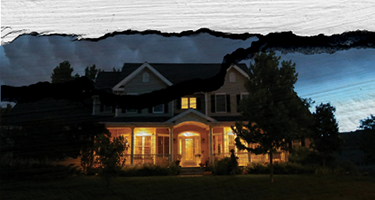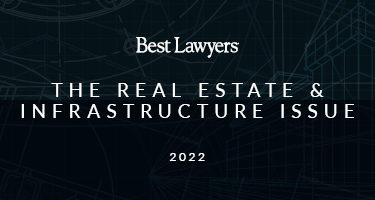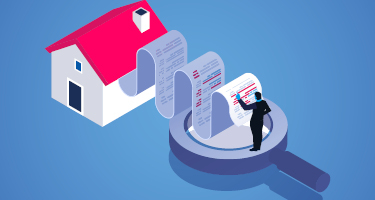By Adam Leitman Bailey, John M. Desiderio, and Joanna C. Peck
Feb 20, 2018
Adam Leitman Bailey, John Desiderio and Joanna C. Peck discuss practical considerations for parties to consider when negotiating §881 licensing agreements, noting that although §881 was once described as a “little-used law” it is now required reading for all attorneys with developer clients seeking to build in New York City.
RPAPL §881 provides an expedited process whereby a property owner or developer, who seeks to make “improvements or repairs” to that owner/developer’s real property, can commence a special proceeding to obtain a court order granting the owner/developer (the putative licensee”) a temporary license to enter the property of an adjoining owner (the putative “licensor”): (a) where the planned improvements or repairs cannot be made without entering the adjoining premises, and (b) where the adjoining owner has refused to give the needed permission. The statute is based in equitable principles, see Chase Manhattan Bank v. Broadway, Whitney Company, 57 Misc.2d 1091, 294 NYS2d 416 (Special Term, Sup. Ct., Queens Co.,1968), affirmed, 24 NY2d 927 (1969), whereby the court is empowered to grant the license, when, “in an appropriate case,” entry by the licensee to the adjoining premises is shown to be necessary and “upon such terms as justice requires.” The statute also makes the licensee liable to the adjoining owner licensor “for all actual damages occurring as a result of the entry.”
Although RPAPL §881 was described by a comment as recently as 2002, as a “little-used law” (as quoted in Rosma Development v. South, 5 Misc.3d 1014(A), 798 NYS2d 713 (Sup.Ct., Kings Co., 2004)(Schmidt, J.), it now clearly is no longer an overlooked and neglected statute. RPAPL §881 is now required reading for all attorneys with developer clients seeking to build in New York City. The statute should also be required reading for attorneys with clients whose properties abut those where demolition and new construction is planned to take place.
It is well established that demolition of an old structure and construction of a new building is an “improvement” contemplated by RPAPL §881. See, e.g.,Rosma, supra. Accordingly, most of the recent case law interpreting the statute has involved either entirely new construction or gut renovation of existing structures by developers and the protections required for the adjoining premises, not only from the ongoing work next door, but from work done in licensed areas of the adjoining premises or from licensed airspace over those premises.
What “justice requires” in each case depends (a) on the specifics of the proposed “improvements or repairs” planned for the property on which the work is to take place, (b) on the foreseeable and necessary protections required to safeguard persons and property on the adjoining premises, and (c) on what is deemed reasonable compensation for the adjoining owner-licensor’s loss of enjoyment of that portion of the adjoining premises required for licensee’s work to proceed.
Confirming the Necessity for the Work and Protections Required: The Developer’s Perspective
Long before the need to apply to a court for an 881 license ever arises, the developer, as the party most interested in initiating the process of “improving” the property next to the adjoining premises, needs to be fully prepared (a) to justify the scope of the work for which it will require access, and (b) to show that it is ready to implement all necessary protections for the adjoining property. When first requesting a license from the adjoining owner, the developer should make a full presentation of what the construction project will entail, why the work requiring access cannot be done in some other way, and all the precautions that the developer must and will take to protect the adjoining owner’s property. Such candor should not be held back, only to be grudgingly disclosed in the course of negotiations or ultimately in a later court proceeding.
The developer should present the adjoining owner with a complete set of construction plans showing the portion of the project that will impact on the adjoining property, together with complete written reports from the developer’s architects and engineers of how the requested access will be used to perform the work required from the adjoining premises. The adjoining owner should not have to search Department of Buildings records to learn what impact the construction next door is likely to have on his property.
Written reports from the developers’ engineers should also be given detailing all of the planned implementations of the protections that will be taken to safeguard the adjoining property during the access period. Such reports are especially important in connection with any excavation planned on the developer’s property below the foundations of buildings on adjoining owners’ properties.
Such expert reports would ultimately be required, in any event, to satisfy RPAPL §881’s requirements in any proceeding commenced upon the parties’ inability to agree on all the terms of a license. See, e.g., Chase Manhattan Bank v. Broadway, Whitney Company, 59 Misc.2d 1085, 300 NYS2d 980 (Special Term, Sup. Ct., Queens Co., 1969)(“requirement of silicone [to complete repair of wall] should be substantiated by an expert in the field”); see also McMullen v. HRH Construction, 38 AD3d 206, 831 NYS2d 147 (First Dept. 2007)(“defendants’ utter failure to show facts making entry necessary would require denial of any such RPAPL application,” and defendants’ assertion of entitlement to an RPAPL license was “risible”). Thus, to induce a successful negotiation with the adjoining owner, the developer has every reason to be open and transparent from the very beginning, rather than engage in a hostile or otherwise difficult negotiation that is sure only to delay the project.
In this respect, the developer should also keep in mind that courts may now permit the adjoining owner to bring an 881 proceeding in reverse and impose a compulsory license agreement on the developer “where the parties cannot reach a licensing agreement and there is clear credible evidence that [developer] has entered or is about to enter or damage [adjoining owner’s] adjoining property.” Chirichella v. BCBS Lorimer LLC, 2017 WL 3386257 (N.Y. Sup.) 2017 NY Slip Op. 31665 (U) (Trial Order) Index No. 505985/2017 (Sup.Ct., Kings Co., 2017).
It is also in the developer’s interest, when initiating license negotiations, to fully disclose its plans for any necessary underpinning of the adjoining premises that the developer’s project may require. This is because, if the developer is not able to reach agreement with the adjoining owner, the court could not issue an order compelling the adjoining owner to accept underpinning as part of an 881 license. Where underpinning is necessarily required as a safety measure, it constitutes a permanent encroachment on the adjoining property, see Broadway Enterprises v. Lum, 16 AD3d 413, 790 NYS2d 402 (2d Dept. 2005). As a permanent encroachment “not now in existence,” it “transcends the statute,” Foceri v. Fazio, 61 Misc.2d 606, 306 NYS2d 1016 (Special Term, Sup. Ct., Queens Co., 1969), “goes beyond temporary access” and, therefore, is “beyond the scope of RPAPL 881.” North 7-8 Investors v. Newgarden, 43 Misc.3d 623, 982 NYS2d 704 (Sup.Ct., Kings Co., 2014). If underpinning should nevertheless be installed, in the absence of a license agreement, it would be subject to an action for ejectment and damages. See Broadway Enterprises, supra; Sunrise Jewish Center of Valley Stream v. Lipko, 61 Misc.2d 673, 305 NYS2d 597 (Special Term, Sup. Ct. Nassau Co., 1969). The developer should, therefore, seek early on to include a permanent easement for the required underpinning as part of any negotiated license agreement.
The Adjoining Owner’s Perspective
It is just as important for the adjoining owner, once apprised of the developer’s project on his doorstep, to engage his own architects and engineers to evaluate the planned construction work and protections presented by the developer, such as any proposed shoring, underpinning, and overhead cantilevered platforms and netting, and/or regarding safeguards for any cranes or superstructures that may be required during construction. However, the mission of the adjoining owner’s professionals is to not only evaluate the adequacy of the planned protections disclosed by the developer, but whether or not the complexity of the construction abutting the adjoining owner’s premises requires some greater protection than that described in the developer’s presentation. Indeed, the adjoining owner’s professionals need to place themselves “in the shoes” of the developer’s consultants, to render the opinion that they would have given themselves if they had been originally engaged to consult on the project by the developer.
The adjoining owner’s consultants also need to consider whether or not the neighbor’s project involves any FAR (floor area ratio) and/or landmark issues that could possibly affect the owner’s plans for future development of his own premises. If so, those issues need to be factored into any evaluation of the impact of the project on the premises and how those issues should be dealt with in any negotiated license agreement or in an 881 proceeding.
Such preparation by both sides is imperative, not only to successfully achieve a comprehensive license agreement, but to be ready to properly present the pros and cons of the parties’ respective contentions to a court in the event of a breakdown in license negotiations. The court must be persuaded not only of the reasonableness and necessity of the scope of the work proposed or opposed by the parties, but also to determine whether or not the necessary work can be done in a manner not requiring the intrusive access sought.
Key Terms and Conditions of a License Agreement
As explained in Rosma, supra, in an RPAPL §881 proceeding:
The court must balance the competing interests of the parties and should grant the issuance of a license when necessary, under reasonable conditions, and where the inconvenience to the adjacent property owners is outweighed by the hardship of their neighbors if the license is refused.
However, whether imposed by the court under RPAPL §881 or negotiated between the parties, the terms and conditions of any license agreement will generally reflect the following sentiments expressed by the Court in North 7-8 Investors v. Newgarden, supra:
Section 881 provides that a license shall be granted ‘upon such terms as justice requires.’ Such terms as justice requires extends to the nature and extent of access that is necessary, the duration such access may be necessary, as well as what protections may be necessary to safeguard the adjoining owner’s property.
Among other things, a license agreement will generally include provisions covering the following important categories:
(a) a description of the scope of work to be conducted on the licensed premises (the “licensed work”), which is usually contained in one or more annexes to the agreement prepared by the developer’s architects and engineers;
(b) the description of the location on the premises in which the licensed work will be permitted to be conducted (the “licensed premises”), the days and hours of the week when the licensed work may be performed (the “licensed work schedule”), and the period of time in which the licensed work is agreed to be completed (the “licensed term”), after which the developer is required to remove all of its work tools and materials and restore the premises to its original condition; so as to limit the disruption to the adjoining owner’s peaceful enjoyment and use of his property as much as possible;
(c) the description of the agreed protections to be implemented for the licensed premises (the “The Protective Work”),
(d) the indemnification provisions for any damages caused to either persons or property on the licensed premises (the “Indemnity Provision”),
(e) the insurance requirements the developer will be required to meet (the “Insurance Provision”),
(f) the reimbursement of the reasonable expenses incurred by the adjoining owner to engage attorneys to negotiate the license agreement, and to engage architects and engineers to evaluate the developer’s plans for the project, the need for access to the owner’s premises, the work to be conducted from the owner’s premises, and the necessary protective measures required to be implemented to safeguard the licensed premises; since, as also noted in Newgard, supra:
The risks and costs involved in the use that a Petitioner makes of its neighbor’s property should be wholly borne by the Petitioner. Equity requires that the owner compelled to grant access should not have to bear any costs resulting from the access, including steps necessary to safeguard their property.
And, in addition,
(g) the amount of an agreed license fee to compensate the adjoining owner for the loss of use and enjoyment of part of his property during the licensed term.
Determining The License Fee and Other Charges
The single most litigated issue in 881cases involves the determination of the amount, if any, of the license fees and reimbursable expenses to be paid to the adjoining owner for the duration of time it takes to complete the licensed work on his premises. The courts do generally agree that “the grant of licenses pursuant to RPAPL §881 often warrants the award of contemporaneous license fees.” DDG Warren v. Assouline Ritz 1, 138 AD3d 539, 30 NYS3d 52 (First Dept. 2016),
However, a survey of several decisions shows that courts have awarded monthly license fees, for relatively minor intrusive access to the adjoining premises, within a range generally no greater than $1,500 to $3,500, largely based on the court’s own subjective perception of the amount of time and space of the adjoining premises of which the adjoining owner will lose peaceful enjoyment for the duration of the licensed work and licensed term. Cases awarding license fees within this narrow range involve compensation for maintaining a sidewalk shed extending 20 feet in front of the adjoining property ($1,500 for five months), entering upon adjoining owner’s property for the purpose of erecting sidewalk bridging extending ten feet onto the sidewalk in front of the premises ($2,500 for 12 months), entering the airspace above a portion of the front and rear yard of the adjoining property ($3,000 for three months), construction of a cantilevered safety balcony which will project into the airspace over the adjoining property’s roof deck ($3,500 for 12 months), erection of a two-legged protective shed on the adjoining property terrace ($2,500 for 12 months), entering upon the adjoining owner’s property to effect repairs on petitioner’s property ($2,000 for eight months).
Nevertheless, in none of the surveyed cases did the adjoining owner submit any evidence from a real estate broker to opine on the diminution in value caused to the property by loss of use and enjoyment of the licensed premises during the license term. If such evidence were presented in accordance with standards by which property appraisals are judged in other situations, such diminution findings could very well be deemed “actual [monthly] damages” under RPAPL §881, and constitute part or all of the license fee awarded.
However, in a case involving substantially more intrusive work on two adjoining properties, in order to complete a $10 Million renovation of a five-story townhouse, where one of the adjoining owners agreed to a stipulation accepting a $10,000 monthly license fee, the court ordered all parties to submit a joint license agreement containing the stipulated $10,000 monthly license fee for a period of one year unless the work would be completed in less than 12 months. See Chan v. Crown Wisteria, 2015 WL 1757006 (2015)(Index No. 151966/14)(Trial Order, Sup.Ct., NY Co., 2015).
The Chan case suggests that, apart from how any court may decide a license fee application in an 881 proceeding where the parties before the court have not agreed on the amount, parties not resorting to court intervention are free to negotiate and agree on license fees of substantially greater amounts than have been awarded in any reported court decision. In fact, parties have and continue to do so where it is in the interest of the developer to complete negotiation of a license agreement as speedily as possible. In such cases, monthly license fees of $10,000 to $15,000 have been negotiated.
Attorney Fees
The language of RPBPL 881 provides “sufficient statutory authority to award reasonable attorney fees as a condition of a license, where the circumstances warrant it.” Newgarden, supra. Generally, where attorney fees are sought as a condition of the license rather than as an incident of litigation, attorneys’ fees incurred in opposing an 881 petition are not deemed an incident of litigation, but instead are considered “a condition of the process of negotiating a license agreement.” Id.
Security Fund Provisions
License agreements negotiated by the parties also often require the developer to deposit a fund into an escrow account (“the security deposit”), which may be held by the attorney for either the developer or the adjoining owner, whereby if the licensee breaches any of its obligations under the license or fails to repair damage caused by The protective work or otherwise, the adjoining owner may use, apply or retain the whole or any part of the security deposit to the extent reasonably necessary to cure the breach or repair the damage.
The security deposit should be an amount appropriately related to the potential amount of the damages that could be caused by the construction work described in the developer’s plans and specifications and permitted by the Department of Buildings. In setting the amount, the parties may consider the amounts of monetary compensation awarded by the courts in reported cases where the developer’s work was negligent and serious damages occurred. For example, in a case involving the negligent removal of lateral support for the adjoining property, the measure of damages was not only the “reasonable cost of restoration” less insurance payments received, but the total lost rent that the adjoining owner incurred as a result of the developer’s negligence over five years, tenant relocation costs, brokers’ fees, and additional expert fees to monitor the restoration – all of which amounted to approximately $2.7 Million. See East 77 Owners Co. v/ King Sha Group, Inc., 40 Misc.3d 1205(A), 975 NYS3d 365 (Sup. Ct., NY Co.. 2014). Likewise, in appropriate cases, within the context of 881 proceedings, courts have recognized the potentiality of such damages occurring and have ordered developers to post bonds of $1 million, $1.5 million and $2 million. See, e.g., Newgarden, supra.
Better to Negotiate Than Litigate
Attorneys for developers need to consider that, while RPAPL §881 is clearly designed to deal with the situation where the adjoining landowner has “refused” to grant a license, judicial intervention should be considered only as a last resort. Developers should use 881 solely for those cases where the “refusal” by the adjoining owner is clearly unwarranted, spiteful, or petty, and adjoining landowners should not seek to impose conditions on granting a license so onerous as to compel the developer to have a court set the license terms. The parties must consider that the court may have a perspective of the situation adverse to their own. The developer must consider that the court may not agree there is any necessity for accessing the adjoining property to perform the work. See, e.g., Lincoln Spencer Apartments v. Zeckendorf-68th Street Associates, 88 AD3d 606, 931 NYS2d 69 (First Dept. 2011). Similarly, the adjoining owner must consider that the court may see the owner’s refusal as a means of extorting a license fee much higher than either the complexity of the work or the amount of lost use and enjoyment of the accessed premises would warrant. See, e.g., 22 Irving Place Corp. v. 30 Irving LLC, 57 Misc.3d 253, 60 NYS3d 640 (Sup.Ct., NY Co., 2017).
Developers also need to consider that resort to an 881 proceeding, although cast as a “special proceeding” intended for more swift judicial resolution, is nevertheless subject to the practicalities of court calendar delays. Unavoidable inherent court delay may impact on the developer’s construction schedule and its ability to meet conditions required by construction loans; especially where a court order, whether granting or denying an 881 license, is always subject to a lengthy appeal process. Such considerations could weigh heavily on how willing a developer may be to agree or disagree to license terms that may seemingly be more favorable to the adjoining owner.
Conclusion
Each license agreement is sui generis, and the terms negotiated will vary in relation to the specific nature of the construction occurring on the developer’s property and with respect to the specific work that must necessarily be done from the premises of the adjoining property. The discussion above has not exhaustively listed all of the many additional issues that need to be addressed in a license agreement, but it nevertheless does summarize the most important issues that the parties and their attorneys must consider when preparing to negotiate. As also noted above, either party may seek to negotiate terms that might not be readily included in any order issued by a court in an 881 proceeding. Nevertheless, where each party to a current negotiation has an incentive to conclude a satisfactory agreement as swiftly as possible, the parties should not be deterred from proposing license terms in their negotiation by what courts have done in matters where other parties have failed to agree prior to seeking judicial relief.
Adam Leitman Bailey is the founding partner of Adam Leitman Bailey, P.C., John M. Desiderio is a partner and chair of the firm’s real estate litigation group. Joanna C. Peck is a partner of the firm.

























